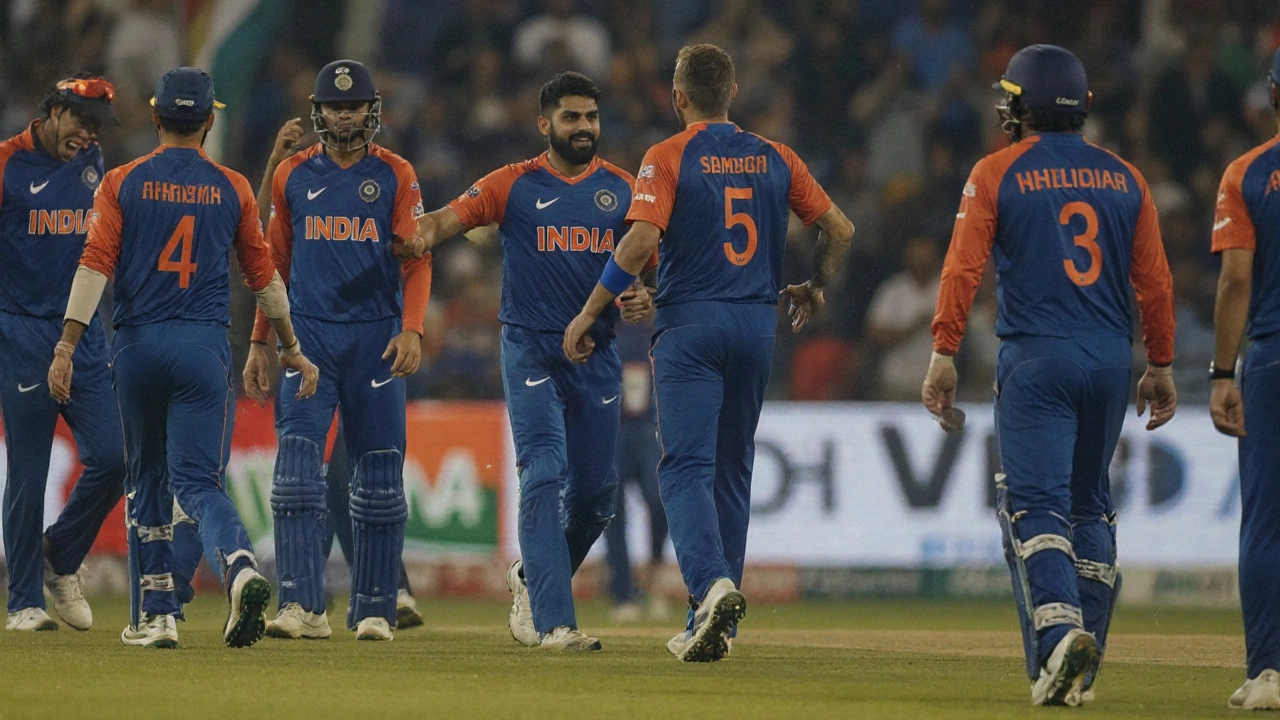What Is the Super Four Stage in Cricket?
If you watch Indian domestic cricket, you’ve probably heard commentators mention the "Super Four" without much explanation. In simple terms, it’s the second‑round round‑robin phase of a tournament where four teams play each other once. The idea is to narrow down the field after the initial group matches and set up a showdown for the title.
How Teams Reach the Super Four
Most tournaments start with two or three groups. Each group plays a round‑robin, and the top team (or top two, depending on the format) moves on. Those qualifiers become the Super Four teams. For example, in the Duleep Trophy, the West Zone, Central Zone, North Zone and South Zone battle it out in the first round. The four best‑performing sides then enter the Super Four.
Performance is measured by points: a win gives you six points, a draw three, and a loss none. Bonus points for batting or bowling can tip the balance. Ruturaj Gaikwad’s 184 runs for West Zone, as reported in a recent Duleep Trophy semi‑final, helped his side secure a spot in the Super Four, showing how individual scores matter.
What Happens During the Super Four
Once the four teams are set, each plays the others once. That means six matches total. The schedule is tight, so teams focus on consistency rather than a single big innings. The table updates after every game, and the team with the most points at the end lifts the trophy. If points are tied, net run rate or head‑to‑head results decide the winner.
Because only four sides are involved, the competition level spikes. Players get a chance to face the best bowlers and batsmen from across the country. This exposure is why many selectors watch the Super Four closely when picking national squads.
Fans also love the Super Four. The limited number of games means each match carries weight, and the drama builds toward a clear champion. Whether you’re a casual viewer or a die‑hard follower, the Super Four offers a compact, high‑stakes cricket experience.
Tips for Watching the Super Four
1. Check the points table after every match – it tells you who’s in charge and who needs a big performance.
2. Notice which bowlers are taking wickets early; they often become the game‑changers.
3. Look for partnerships that last over 150 runs; they usually swing the result in that team's favor.
4. Pay attention to captaincy decisions – rotating bowlers or promoting a lower‑order batsman can change momentum.
Following these cues keeps you engaged and helps you understand why a single spell or innings can reshape the entire tournament.
Why the Super Four Matters for Players
For cricketers in their mid‑20s, the Super Four is a platform to prove they belong at higher levels. Consistent runs or strike‑rate improvements earn them a spot in India A or even the national squad. Coaches look for players who perform under pressure, and the Super Four provides that pressure in a short, intense format.
Take the example of a player who scores a quick 100 in the Super Four; that innings not only adds points but showcases temperament. Such performances often appear in the selection committee’s notes.
In short, the Super Four stage is the crucible where talent, strategy, and consistency meet. Whether you’re a player aiming for the next step or a fan wanting clear action, understanding this stage makes the tournament more enjoyable.
So next time you see a headline about the Super Four, you’ll know exactly what’s at stake and why every run and wicket counts.

India Secures Spot in Asia Cup 2025 Final After Dominant Super‑Four Run‑Through
India topped the Super Four phase of the Asia Cup 2025 with two wins, earning a place in the September 28 final against Pakistan. Captain Suryakumar Yadav's side posted a solid 168 against Bangladesh, with Abhishek Sharma’s 75 leading the charge. Kuldeep Yadav’s three‑wicket spell helped bowl Bangladesh out for 127. Pakistan clinched second place after a five‑wicket chase of 134 versus Sri Lanka. Bangladesh and Sri Lanka exited the tournament, leaving the classic rivalry to decide the champion.
View More